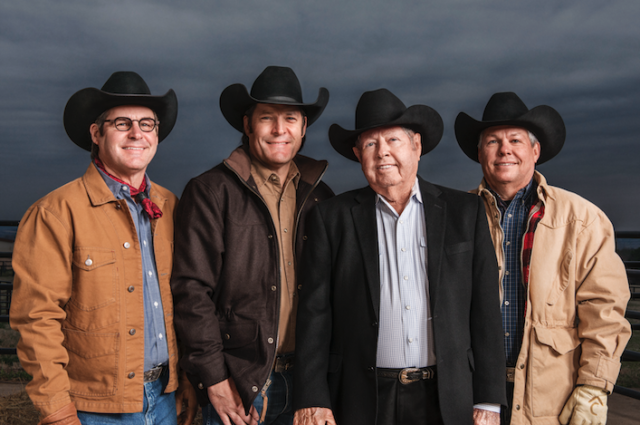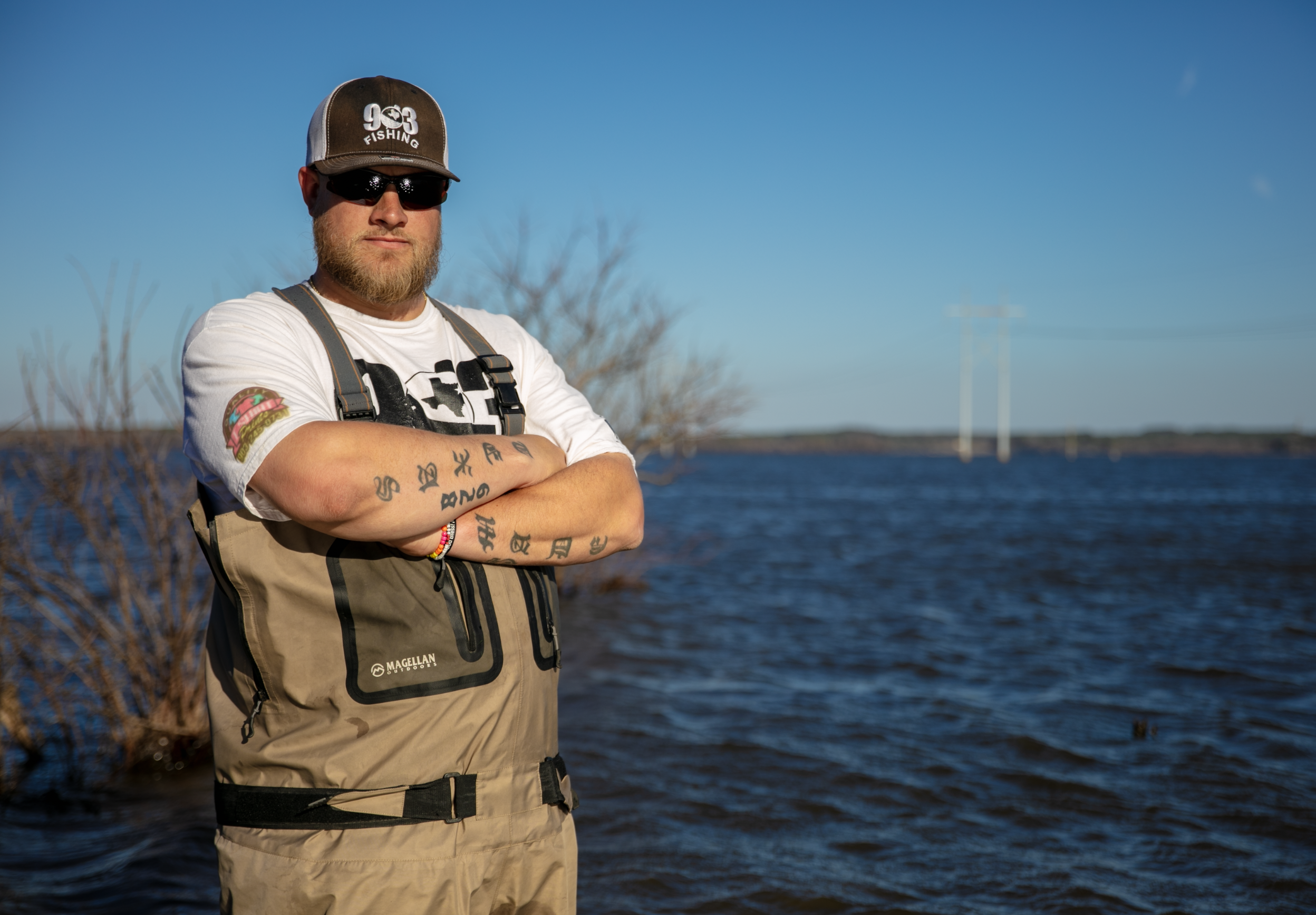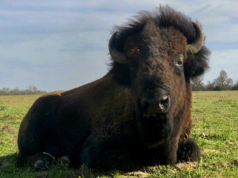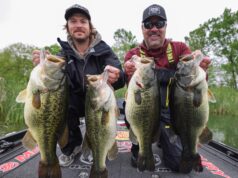by David Preziosi
From their first store in Pittsburg, Texas, which opened in 1965, to 95 stores across 15 states today, Tyler based Cavender’s has grown into an incredibly successful family-run business and a leader in the western wear industry.
Their success has always come down to hard work, dedication, and a deep knowledge of their customer’s needs. They pride themselves on providing great customer service and offering to help customers find just what they are looking for to support their company motto of “Don’t Just Wear It, Live It!”
James Cavender and his wife Pat grew up in Idabel, Oklahoma and got to Texas after college and James serving in the Air Force. They moved to Dallas where James worked in the insurance industry; however, he wanted a small business of his own. He researched the possibilities and settled on opening a Dairy Mart franchise in the small East Texas town of Pittsburg in 1957. At the time, hamburgers sold there for just 25 to 30 cents. After the first year of business, he ended the franchise agreement and swapped out the ‘M’ for an ‘H’ and renamed the business Dairy Hart.
James worked a grueling schedule of nights and weekends for seven years until he sold the Dairy Hart in 1964 to begin exploring the retail clothing business. He tried to buy a local department store in Pittsburg that was going out of business, but that deal fell through. Instead, he opened Cavender & Smith’s with Sonny Smith in Pittsburg that same year. The new store featured men’s and boy’s apparel and shoes. James went on to open his own clothing store in 1965 named Cavender’s and started his foray into cowboy boots by carrying three styles of Tony Lama boots. The success of the boot sales led him to carry more boots, and his loyal clientele expanded from Pittsburg to the surrounding towns with customers who came from all over for the boots and clothing. Over time, the store became more western wear focused.
In the 1970s and 1980s the business expanded with new stores opening all over Texas. James created a liquidation business in the 1970s that acquired the inventory of western wear stores that were going out of business. He would either resell it in Cavender’s stores or he would acquire the location for a new Cavender’s store. He even purchased a cattle trailer load of boots from a manufacturer going out of business to supply his stores. The western wear industry boomed in the 1980s with the popularity of the film Urban Cowboy and its star John Travolta. After the popularity of the movie subsided, the demand for western wear similarly declined, forcing many stores to close. James continued to buy closing stores to add to the growing collection of Cavender’s locations. He also partnered with up-and-coming singer George Strait, who would make appearances at the openings and attract fans who hoped to meet the future Texas icon.
Cavender’s is definitely a family business. James’ three sons – Joe, Clay and Mike have been involved with the company since they were teenagers selling on commission and even helping to dig foundations for new stores. Joe, the eldest son, became president of the company in 1994 and began modernizing Cavender’s to fit the needs of a changing retail industry and prepare for future growth. At the time, they had 34 stores not connected by any type of computerized information system. Getting one set up enabled Cavender’s to accelerate their growth. Joe also continues to buy the boots for the stores today. Clay serves as the vice president of merchandising and oversees the selection of clothing and hats for the stores. Mike is the vice president of operations and leasing, and handles the real estate side of the business by scouting locations and planning new stores. All three of the brothers collaborate on big decisions for the company, which has helped it to succeed as a family business for nearly
60 years.
The family’s years of hard work and dedication to the business has paid off, as Cavender’s is the top retailer for many prestigious western wear manufactures such as Lucchese, Justin, Tony Lama, Laredo, Nocona, Rocky Mountain, and Wrangler. They continually seek the best in design, style, and authentic western craftsmanship for their customers and has led to impressive sales numbers
for the company.
Sadly, James passed away in 2018; however, the company he built from scratch continues to thrive to this day and still acknowledges its roots in the quality products they sell and their customer service. Cavender’s has become the premier western clothing retailer in the South and Southwest while remaining a family-run and owned business. The growth, development and operations continue to be handled by James’ three sons along with the company’s dedicated employees who have been with the company for years and sometimes decades. In Cavender’s stores, you know that it is a family-run business with pictures of James, Pat, Joe, Mike, Clay, and their families on the walls, along with old black and white photos of their grandparents on their ranches in Texas
and Oklahoma.
Though being in the spotlight was never the objective for the Cavender family, their important contributions were nonetheless first recognized in 1998 when James Cavender was inducted into the Western Image Awards Hall of Fame, and later in 2019 when the Cavender family was inducted into the Texas Cowboy Hall of Fame and the Texas Rodeo Hall of Fame.
In March of 2023, the Texas Historical Foundation will honor the Cavender family and their incredible family-run business as Lone Star legends with its Star of Texas award, exemplifying the best the state has to offer. The Cavender family will join the past winners of the award including J.P. Bryan, Frost Bank, and Charlene and Red McCombs.
This prestigious award celebrates an iconic Texan or Texas company which has made an important contribution to preserving and promoting Texas history or culture across the state. The Cavender family and company has done that with their entrepreneurial spirit and love of all things Texas which helped the business grow to the leading western wear company that it is today. This successful business model has included support for statewide causes and promotion of Texas goods and products that reflect the Lone Star lifestyle and spirit. What has guided the family and the company for almost 60 years are high standards, hard work, and integrity—hallmarks of the “Texas way” of conducting business and worthy of recognition with the Texas Historical Foundation’s Star of
Texas award.
The Texas Historical Foundation was established in 1954 and is a nonprofit organization with a mission to preserve Texas history by providing grant funds for historic preservation projects and promoting the state’s rich and diverse history though educational efforts. The board of the Foundation administers nine endowments that provide funding to help communities and organizations save their own piece of Texas history.
Grants are given by the Texas Historical Foundation to nonprofits across the state that are saving Texas’ historic buildings, archeological sites, artifacts, documents, and culture. Educational grants are given for documentaries, books, and research projects that help teach school children the fundamentals of the history of the Lone Star State. Through its award-winning Texas HERITAGE magazine and other publishing and video vehicles, the Texas Historical Foundation supports historical research and endeavors to educate and inform the public about preservation, culture, archeology, and regional and local history. The Birth of Texas, an eight-part documentary series that covers Texas history from Spanish settlement to statehood, was completed with a large grant from the Texas Historical Foundation.
Using private funding, the Texas Historical Foundation has helped to save the irreplaceable relics of Texas history that otherwise would be lost forever with over $1.6 million in grants awarded since 2013. From Orange to El Paso and Edinburg to Amarillo, Foundation grants have touched all areas of the state by supporting diverse projects in wide-ranging cultures and areas of interest. Many grants have also been given for projects in East Texas including ones in Tyler, Marshall, Pittsburg, Jefferson, Linden, Bloomberg, Texarkana, Paris and more.
As part of the Texas Historical Foundation’s granting efforts, more than $225,000 was given to the Armstrong County Museum in the Texas Panhandle for the restoration of the 1887 residence of cattleman Charles Goodnight and his wife Mary Ann. Funds also assisted with landscaping and rehabilitation of several outbuildings at the site.
When the Texas Historical Foundation learned that preservationists in rural Armstrong County were working to save the home of the legendary rancher and trailblazer, the organization knew that it was a worthwhile cause that would appeal to Texans. The Foundation’s board of directors endorsed the Charles Goodnight Ranch Home restoration and assisted with both fundraising and advocacy efforts for the
important project.
Goodnight and his partner Oliver Loving helped forge the Goodnight-Loving Trail in 1886 over which thousands of longhorns were moved from Texas to the Midwest. Goodnight built the JA Ranch near Palo Duro Canyon in 1887 with partner John Adair, and it was the first cattle ranch in the Texas Panhandle with 100,000 head of cattle and helped save the American Bison from extinction. The same year, he established the Goodnight-Thayer Cattle Company and built a spacious Victorian-style two-story ranch house in what is now Armstrong County in 1887. The Texas Historical Foundation gave a grant to help restore the important house on its original site back to the early days of the ranch to teach people about life in West Texas in the late 1800s. The home also offers spectacular views of the countryside, including the nearby bison herd that is descended from the one raised by Charles and Mary Ann Goodnight.
The Charles and Mary Ann Goodnight Ranch is now a State Historic Site run by the Texas Historical Commission and is open to visitors. On the site is a Visitor and Education Center with exhibits about the Goodnights, bison, and the settlement of the area. The original Goodnight house is open for tours and there is a giant arrow marker that is part of the Quanah Parker Trail, which also serves to commemorate the friendship between Charles Goodnight and Quanah Parker, last Chief of the Comanche. Through this grant project, future generations will learn the stories of Charles Goodnight—stories of vision, determination, achievement, frontier life in the canyon, and the development of the cattle industry in Texas.
Archeology is also an extremely important component to the history of Texas, and the Texas Historical Foundation has funded grants for many projects across the state including the crucially important Gault Archaeological Site in Bell County. At Gault, archeologist Dr. Michael Collins discovered evidence that people lived there over 20,000 years ago, which predated the Clovis culture, once thought to be the earliest humans in North America, by around 6,500 years. Stone tools much older than the Clovis period and an array of incised stones that represented some of the earliest forms of artwork in the Americas were discovered at Gault.
The Cavender family embodies the spirit of Texas and continues to promote the Texas culture that has made Texas the iconic place that it is today. The Texas Historical Foundation is honored to celebrate the hard work and dedication of the family and its impact on Texas with its 2023 Star of Texas award, which will be presented on March 24th at The Hotel Drover in the Fort Worth Stockyards – a fitting place for a company that carries on the Western spirit in its stores across the country. The award follows the mission and work of the Texas Historical Foundation to preserve the history and culture of the state and to highlight what makes Texas great.
To learn more about the work of the Texas Historical Foundation please visit www.texashistorcialfoundation.org.











